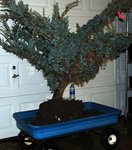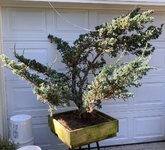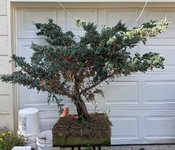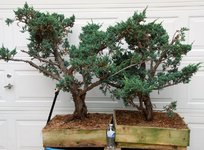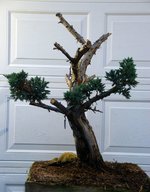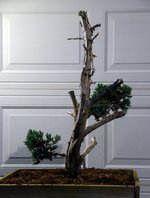The advantage of using a hose to wash off the clay is the water does not usually damage the roots, where chopsticks, trowel, or other implements including fingers can tear roots loose.
The repotting is done, and looks like a good job. So despite my comments below, do not change it this year. Wait 2 or 3 years then repot.
Myself, I would have chosen a different mix. I find Napa 8822 to be too fine a particle, though it does pair well with Dry Stall brand pumice, or a fine perlite. Haydite I have not used, not real familiar but what I remember is a much more coarse particle than 8822. Particle size for you mix should be uniform, nothing so fine that it would fall through a window screen, nothing coarse. The more uniform the particle size, the better the air penetration to the roots.
Leca is a round sphere for a particle. The round balls do not interlock at all with the surrounding particles. Any tree potted in Leca will always be unstable. As part of a mix, Leca makes the mix, unstable. I have found Leca to be a uniquely bad ingredient for a bonsai mix. Similarly bad, round sand blasting beads. They look like sand, but act like quicksand. Nothing stays where you put it.
